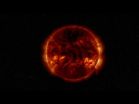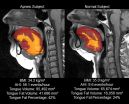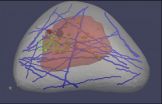(Press-News.org) Millions of tourists visit the Mediterranean each year, but its deep-blue waters host the largest invasion currently underway on Earth. Almost 1,000 alien species, including fish, crustaceans, and algae are now established from other seas through human activities. In the open-access journal Frontiers in Marine Science, a multinational team of researchers analyzed data from a new information system developed by the European Commission to show how the introduction of alien species has changed the native biodiversity within the Mediterranean.
A hotspot for marine biodiversity, the Mediterranean includes 17,000 described species, of which around 20% occur nowhere else. But invasive species can disrupt this delicate balance. For example, Siganus luridus and S. rivulatus fish from the Indian Ocean have invaded the eastern Mediterranean, where they overgraze on forests of brown algae in the shallows, stripping them bare to the rocks, with devastating effects on the animal species within this ecosystem. Elsewhere, communities of native algae, corals, and invertebrates die because they are starved of oxygen, light, and food beneath the fast-growing invasive alga Caulerpa cylindracea, which forms mats of up to 15 cm thick.
Stelios Katsanevakis, a researcher at the European Commission's in-house science service, the Joint Research Centre (JRC), and colleagues looked at data on 986 alien species and tracked their spread. They used the new online platform, called the European Alien Species Information Network (EASIN). Developed by the JRC, EASIN allows for European-wide assessments of the pathways of introduction, the spread, and the impacts of alien species. Analyzing this online resource, the researchers show severe consequences for food webs and ecosystem services as invasive species expand their range and native species are driven to local extinction.
"Using the information in EASIN, we could map in unprecedented detail how far each alien species has already spread. We found that the composition of marine communities, which in the past was shaped solely by climate, the environment, and oceanographic barriers, now greatly depends on the human activities. In many areas, shipping, aquaculture, and the opening of navigational canals are now becoming the main drivers of species distribution. Proper management of the pathways of introduction of alien species is urgently needed, such as the entry into force of the Ballast Water Management Convention, to prevent new introductions", says Dr Katsanevakis.
The researchers found that around 60 species, mainly algae, have been introduced accidentally through aquaculture, especially off the coast of Venice and southwestern France. More than 400 species of alien fish and invertebrates in the Mediterranean have come by way of the 145-year-old Suez Canal. The rate of their arrival is increasing: over 80% first arrived less than 50 years ago.
The researchers believe that "stowaway" species have profited from increasing shipping activities over this period, but the invasion has also been helped by global warming. Especially the waters between southern Turkey, Syria, Lebanon, Israel, Gaza, Cyprus, and Egypt have become markedly warmer over the past 20 years, well suited for species from the Red Sea, the Arabian Sea, and the Indian Ocean. In this region of the Mediterranean, conveniently located near the exit of the Suez Canal, up to 40% of the marine fauna is now of alien origin.
"These invasions will continue and will keep affecting biodiversity in the Mediterranean. Its future ecosystems will likely be very different to what they are now," warns Dr Katsanevakis. "We need further research to better understand what effect these changes will have, including on the vital services that humans obtain from marine ecosystems, such as food provision, coastal protection, recreation and tourism."
INFORMATION:
Note to Editors
1. For a copy of the embargoed paper, please contact: press@frontiersin.org
2. For online articles, please include a link to the article, which will appear on the following active URL: http://journal.frontiersin.org/Journal/10.3389/fmars.2014.00032/abstract
Article title: Invading the Mediterranean Sea: biodiversity patterns shaped by human activities
Journal: Frontiers in Marine Science
DOI: 10.3389/fmars.2014.00032
Authors: Katsanevakis S, Coll M, Piroddi C, Steenbeek J, Ben Rais Lasram F, Zenetos A and Cardoso A
3. Contacts
Stelios Katsanevakis,
Researcher
European Commission, Joint Research Centre,
Institute for Environment and Sustainability
Water Resources Unit, Italy
Email: stelios@katsanevakis.com
Gozde Zorlu
Communications Manager
Frontiers
Switzerland
E-mail: press@frontiersin.org
4. About Frontiers
Frontiers is a community-driven open-access publisher and research networking platform. Established by scientists in 2007, Frontiers drives innovations in peer-review, article level metrics, post publication review, democratic evaluation, research networking and a growing ecosystem of open-science tools. The "Frontiers in" journal series has published 25,000 peer-reviewed articles across 48 journals, which receive 6 million monthly views, and are supported by over 160,000 leading researchers worldwide. For more information, visit: http://www.frontiersin.org
Biodiversity in the Mediterranean is threatened by alien species
2014-09-30
ELSE PRESS RELEASES FROM THIS DATE:
Clinical trial finds virtual ward does not reduce hospital readmissions
2014-09-30
TORONTO — A virtual ward, a new model of care that provides support to high-risk and complex patients in the community for a few weeks after discharge from hospital, did not prevent hospital readmissions as hoped in a clinical trial in Toronto.
Hospital readmissions are common and costly and no intervention has reliably reduced them. Virtual wards, pioneered in Britain 10 years ago, were thought to have the potential to reduce readmissions, but had not been rigorously evaluated by researchers.
Dr. Irfan Dhalla, a physician at St. Michael's Hospital, led a randomized trial ...
Researchers show EEG's potential to reveal depolarizations following TBI
2014-09-30
CINCINNATI—The potential for doctors to measure damaging "brain tsunamis" in injured patients without opening the skull has moved a step closer to reality, thanks to pioneering research at the University of Cincinnati (UC) Neuroscience Institute.
The research team, led by Jed Hartings, PhD, research associate professor in the department of neurosurgery at the UC College of Medicine, has shown that spreading depolarizations—electrical disturbances that spread through an injured brain like tsunami waves—can be measured by the placement of electroencephalograph (EEG) electrodes ...
NASA's Swift mission observes mega flares from a mini star
2014-09-30
On April 23, NASA's Swift satellite detected the strongest, hottest, and longest-lasting sequence of stellar flares ever seen from a nearby red dwarf star. The initial blast from this record-setting series of explosions was as much as 10,000 times more powerful than the largest solar flare ever recorded.
"We used to think major flaring episodes from red dwarfs lasted no more than a day, but Swift detected at least seven powerful eruptions over a period of about two weeks," said Stephen Drake, an astrophysicist at NASA's Goddard Space Flight Center in Greenbelt, Maryland, ...
NASA's HS3 looks Hurricane Edouard in the eye
2014-09-30
NASA and NOAA scientists participating in NASA's Hurricane and Severe Storms Sentinel (HS3) mission used their expert skills, combined with a bit of serendipity on Sept. 17, 2014, to guide the remotely piloted Global Hawk over the eye of Hurricane Edouard and release a sonde that rotated within the eye as it descended and fell into the eyewall of the storm at low levels.
NASA's HS3 mission has returned to NASA's Wallops Flight Facility on the Eastern Shore of Virginia for the third year to investigate the processes that underlie hurricane formation and intensity change ...
Study shows that tongue size and fat may predict sleep apnea risk in obese adults
2014-09-30
DARIEN, IL – A new study of obese adults is the first to show that those who have obstructive sleep apnea have a significantly larger tongue with a higher percentage of fat than obese controls. This may provide a mechanistic explanation for the relationship between obesity and sleep apnea.
Results show that obese participants with sleep apnea had significantly greater tongue volumes, tongue fat and percentage of tongue fat than obese controls without sleep apnea, after adjusting for potential confounders such as age, body mass index (BMI), gender and race. Further analysis ...
Ultrafast remote switching of light emission
2014-09-30
This news release is available in German.
The researchers etched a photonic crystal around several quantum dots in a semiconductor layer. Quantum dots are small structures that spontaneously emit light as a consequence of atomic processes. If a short laser pulse is fired at the photonic crystal, its refractive index is modified and the quantum dot experiences a change in the electromagnetic field around it. This change can speed up or slow down the emission of light by the dot. As soon as the refractive index recovers its usual value, the dot emits light again ...
'Virtual breast' could improve cancer detection
2014-09-30
Next to lung cancer, breast cancer is the leading cause of cancer death in women, according to the American Cancer Society. That's why so many medical professionals encourage women to get mammograms, even though the tests are imperfect at best: only a minority of suspicious mammograms actually leads to a cancer diagnosis.
That results in lots of needless worry for women and their families—not to mention the time, discomfort and expense of additional tests, including ultrasounds and biopsies.
Recently, a different type of test, ultrasound elastography, has been used ...
Rehospitalization in younger patients
2014-09-30
Older adults often are readmitted after hospitalization for heart failure, pneumonia, and acute myocardial infarction, a significant issue that has caused Medicare to target hospitals with high 30-day readmission rates for financial penalties. Older adults are also often admitted for reasons other than the original hospitalization. This vulnerability to readmission has been referred to as "post-hospital syndrome." However, whether younger patients also experience a similar pattern of readmission has not been well studied.
In a large cohort study, Isuru Ranasinghe and ...
Diuretics in proton pump inhibitor-associated hypomagnesemia
2014-09-30
Proton pump inhibitor (PPI) therapy is associated with hospitalization for hypomagnesemia, particularly among patients also receiving diuretics, according to research published this week in PLOS Medicine. The study, conducted by David Juurlink of the University of Toronto and colleagues, suggests that physicians reconsider long-term PPI therapy for patients with a diagnosis of hypomagnesemia or concurrent use of diuretics.
Roughly 145 million prescriptions for PPI are dispensed in the United States annually for acid-related disorders such as dyspepsia and gastroesophageal ...
At dusk and dawn: Scientists pinpoint biological clock's synchronicity
2014-09-30
Scientists have uncovered how pacemaker neurons are synchronized at dusk and dawn in order to maintain the proper functioning of their biological clocks. Their findings, which appear in the journal PLOS Biology, enhance our understanding of how sleep-wake cycles are regulated and offer promise for addressing related afflictions.
"We've known for some time that the time-keeping of our biological clocks is a complex enterprise," says New York University's Justin Blau, a professor of biology and neural science and one of the study's co-authors. "But our results offer new ...





